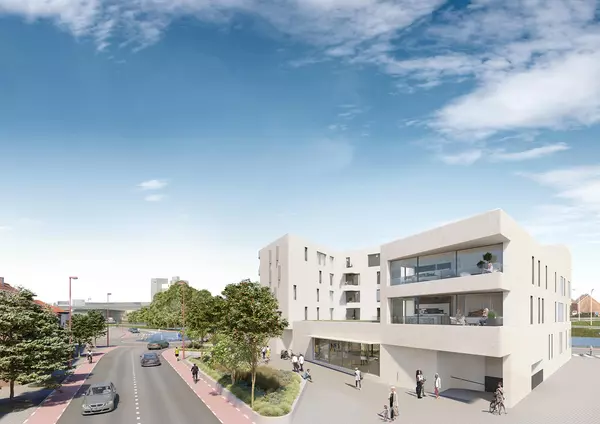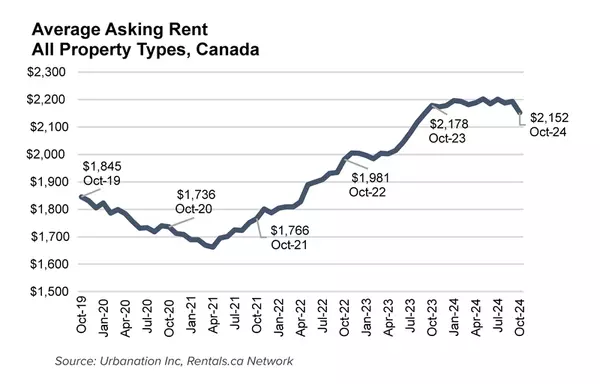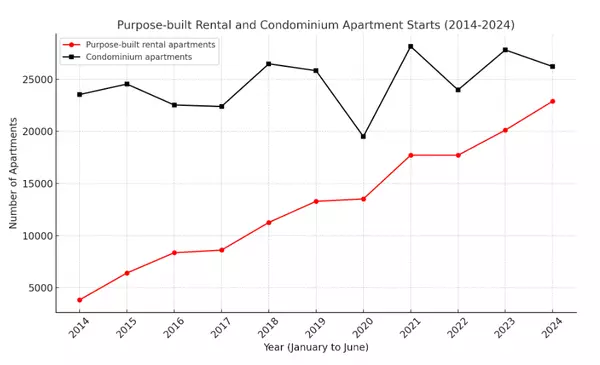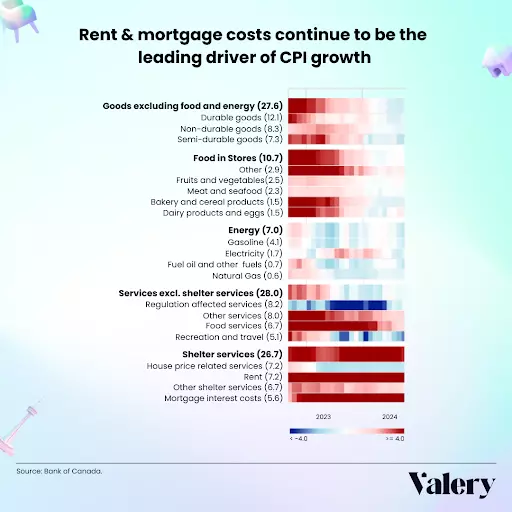Canadian housing market sees April dip: Rising inventory and balanced conditions signal shifts ahead
The Canadian housing market experienced a slight dip in sales activity in April compared to March despite a rise in the number of properties available for sale, which would typically signal the onset of the spring market.
National home sales have declined by 1.7 per cent since March. However, this decrease was compounded by a 2.8 per cent rise in newly listed properties, resulting in a 6.5 per cent jump in the overall number of properties available for sale, reaching its highest level since the onset of the COVID-19 pandemic.

Trends over time
A noticeable trend is the peak in sales activity around 2020 Q3 through 2021 Q3, where sales consistently topped 600,000 units, peaking close to 800,000 units in some quarters. This surge could be attributed to a variety of factors such as low interest rates, a response to the COVID-19 pandemic where people sought better living arrangements and a temporary rush to capitalize on favorable market conditions. Post-2021 Q3, there’s a clear downward trend, with sales gradually declining to below 400,000 units by April 2024.

Unlike sales, listings show a less volatile pattern. The peak of new listings closely aligns with peak sales periods, suggesting that the initial surge in sales was supported by a substantial number of listings, providing enough supply to meet the high demand.
Post-2021, though sales decline sharply, new listings show a gradual decline but are consistently above 500,000 units, indicating that while fewer transactions are occurring, the market still has a relatively healthy supply of properties.
The correlation between sales and listings is strong, especially during the peak periods. High sales volumes were matched by high listing volumes, which suggests that the market was both active and balanced in terms of supply and demand. As sales begin to decline, listings also decrease but at a slower rate, which could indicate an oversupply in the market or less urgency to sell, contributing to the cooling of the market.
Market conditions
The increase in actual transactions may partly reflect the timing of the Easter long weekend, and with sales down and new listings up in April, the national sales-to-new listings ratio eased to 53.4 per cent — slightly below the long-term average of 55 per cent. This is generally a good thing as a ratio between 45 per cent and 65 per cent is balanced, with readings above and below this range indicating seller’s and buyer’s markets, respectively.
The months of inventory, another important metric, stood at 4.2 months on a national basis at the end of April, up from 3.9 months in March and the highest level since the pandemic began. This increase in inventory, coupled with the balanced sales-to-new listings ratio, indicates a shift towards more balanced market conditions after a prolonged period of tight supply and strong demand.
Regional variations

While the national picture shows a balanced market, there are notable regional variations. Calgary, Edmonton and Saskatoon continue to experience steady price growth, with prices in these markets ticking higher since the beginning of 2023. In contrast, prices are generally sliding sideways across most other regions of the country.
The Lower Mainland of British Columbia, which includes Greater Vancouver and the Fraser Valley, saw slight month-over-month price declines in April, ranging from -0.2 per cent to -0.5 per cent. However, year-over-year price changes in these areas remain positive, with Greater Vancouver up 2.7 per cent and the Fraser Valley up 1.9 per cent.
Ontario’s housing markets also exhibited mixed performance. The Greater Toronto Area (GTA) saw a 0.4 per cent month-over-month price increase, while other regions like Kitchener-Waterloo (1.0 per cent), Hamilton-Burlington (1.2 per cent), and Ottawa (0.0 per cent) experienced modest gains or remained flat. Conversely, areas like Sudbury (5.9 per cent) and Bancroft (-3.4 per cent) saw more significant price movements.
In Quebec, the Montreal CMA experienced a 0.8 per cent month-over-month price decline, while the Quebec CMA saw a 1.2 per cent increase. The Maritimes, including New Brunswick, Nova Scotia and Prince Edward Island, generally saw modest price gains or remained stable in April.
The actual (not seasonally adjusted) national average home price was $703,446 in April 2024, down 1.8 per cent from April 2023. This year-over-year decrease in the national average price is likely influenced by the cooling market conditions and increased inventory levels.

Oversupplied, slower spring market with more buyer choice and bargaining power
According to CREA’s senior economist, Shaun Cathcart, the spring market of 2024 is characterized by a healthier number of properties for buyers to choose from, but with less enthusiasm on the demand side compared to the previous year. Most real estate professionals would agree with this — we’re in a market that’s oversupplied compared to the past few spring markets we’ve seen and, as a result, there’s very little urgency among buyers, who are enjoying the rare opportunity to shop around.
James Mabey, chair of CREA’s 2024-2025 board of directors, noted that the increase in listings is resulting in the most balanced market conditions seen at the national level since before the pandemic.
Despite high mortgage rates making it challenging for some buyers to enter the market, those who can afford to purchase a home are enjoying more choice and increased bargaining power. However, as Mabey points out, the current balance in the market might be short-lived given the underlying demand.
Personally, I see the Canadian housing market transitioning towards a more balanced state, with a noticeable increase in inventory and a moderation in price growth. However, regional variations persist, indicating that while some areas are stabilizing, others may still experience fluctuations.
As we move further into the spring and summer buying seasons, it’s clear that the market dynamics will continue to evolve, so both buyers and sellers should be keeping a close eye on the current trend.
Categories
Recent Posts










GET MORE INFORMATION


